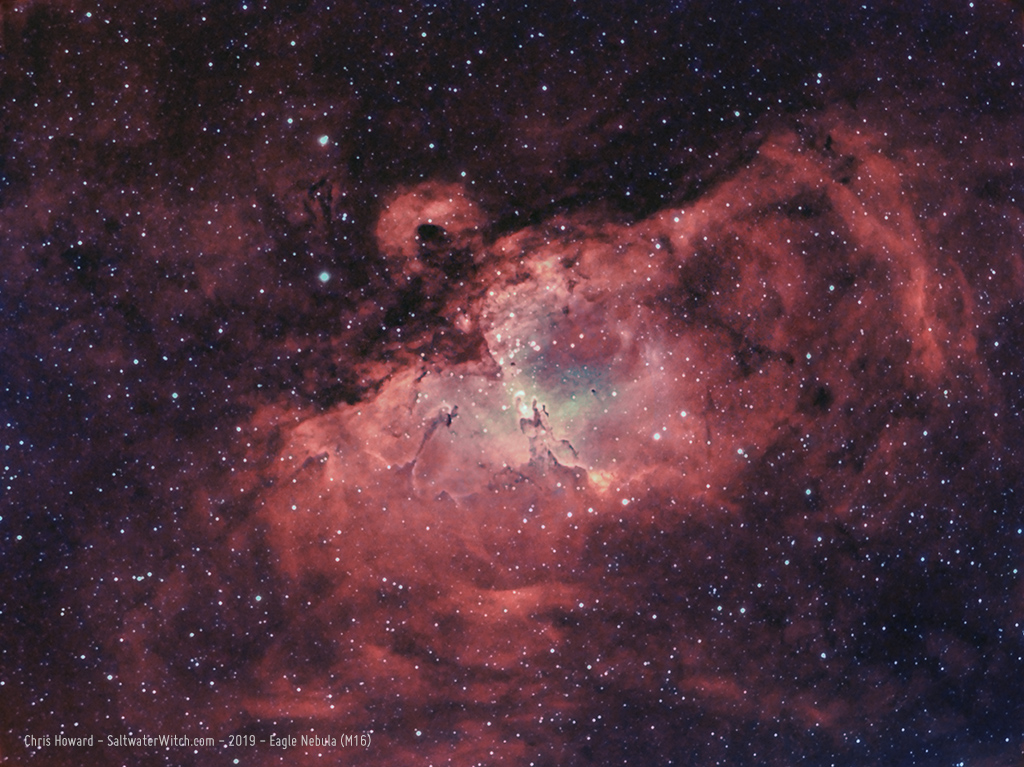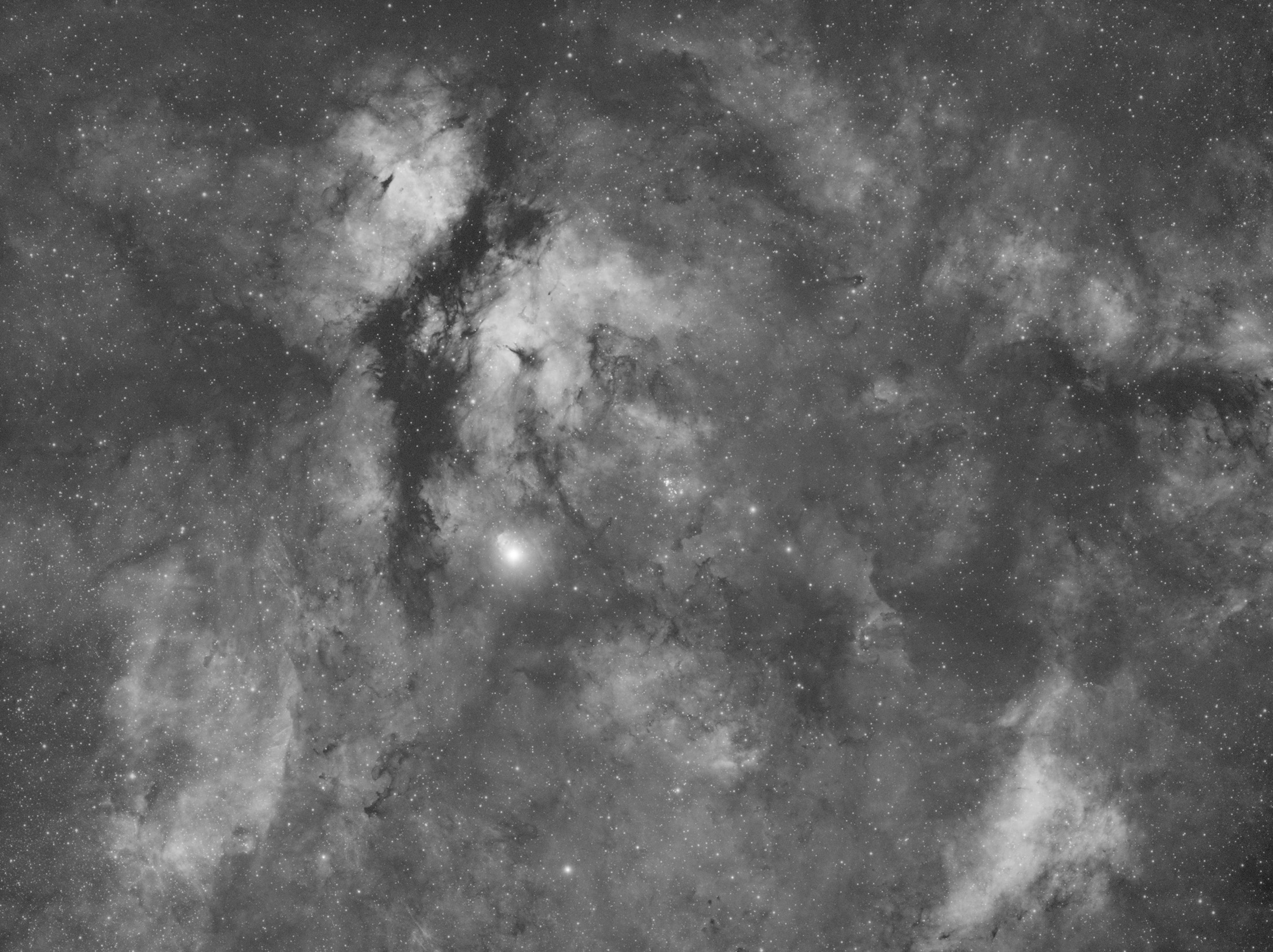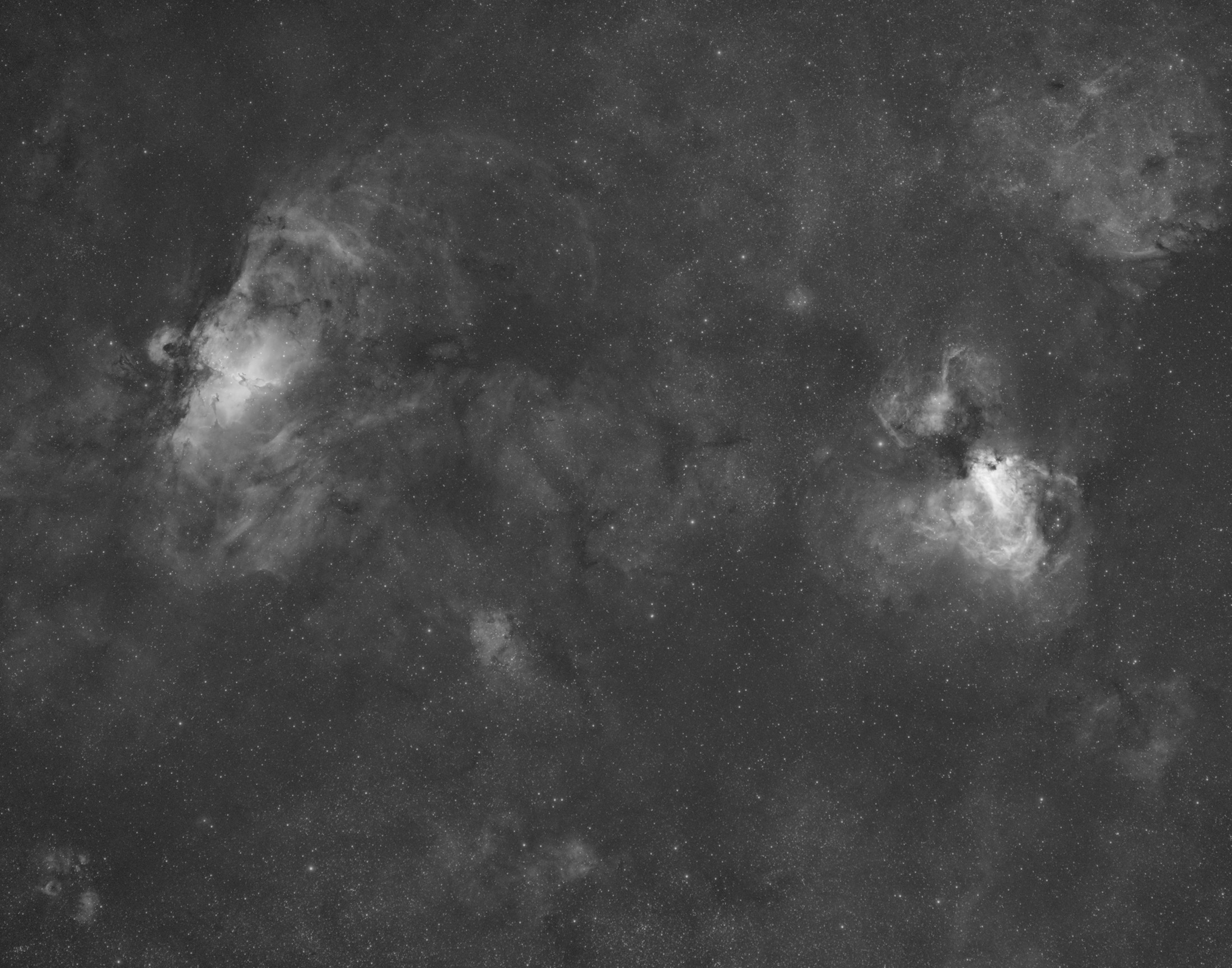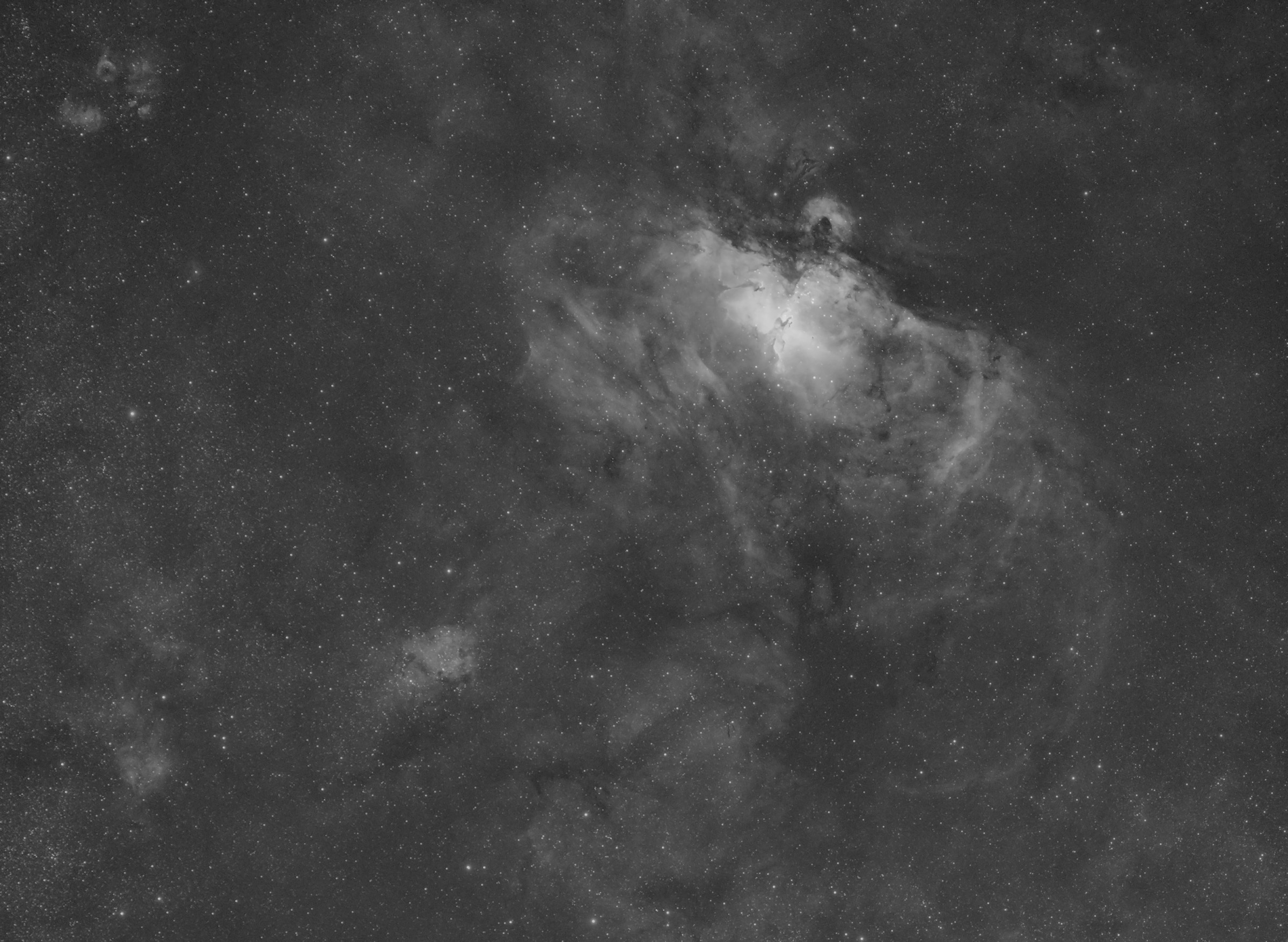It was a night of dodging clouds and narrowband imaging...
In two parts: I spent the first half of the night on IC 1318, the "Sadr Region" at the heart of the constellation Cygnus. IC 1318 is a vast and energetic emission nebula surrounding one of the brightest stars in the night sky, Sadr (γ Cygni). Click for the full sized image.
And then shifted the whole operation to the south to the constellation Serpens, just out from the Milky Way core, capturing Messier 16 (Eagle Nebula, NGC 6611), the bright nebula on the left side, and M17 (Swan Nebula, NGC 6618) on right.
Notes: William Optics SpaceCat 51 Apo Refractor 250mm f/4.9, Astronomik 6nm Ha filter, ZWO ASI1600MM-Pro monochrome camera, Sky-Watcher EQ6-R Pro equatorial mount.
Posted June 6, 2022
Eagle Nebula - wide-field view with a side-order of infrared
Here's another one from last night's run, a wide-field view of the Eagle Nebula (M16, NGC6611) in IR-OIII-Ha with Ha luminance. From our perspective Messier 16--Eagle Nebula--sits just north of the Milky Way's dense core of stars, bands of clouds, dust, hydrogen, and other galactic detritus. I wasn't very hopeful with the IR subs, but the Ha subs were beautiful. The OIII frames were about what I expected--not too much but enough to include them. To brighten things up I went back and added the processed Ha stack as a luminance layer. Yes, this may be a spectacularly weird color arrangement, but we're working in false color imaging already, and this doesn't seem that far off from our galaxy's actual core colors--at least in terms of the bands of dust and ionized gases.
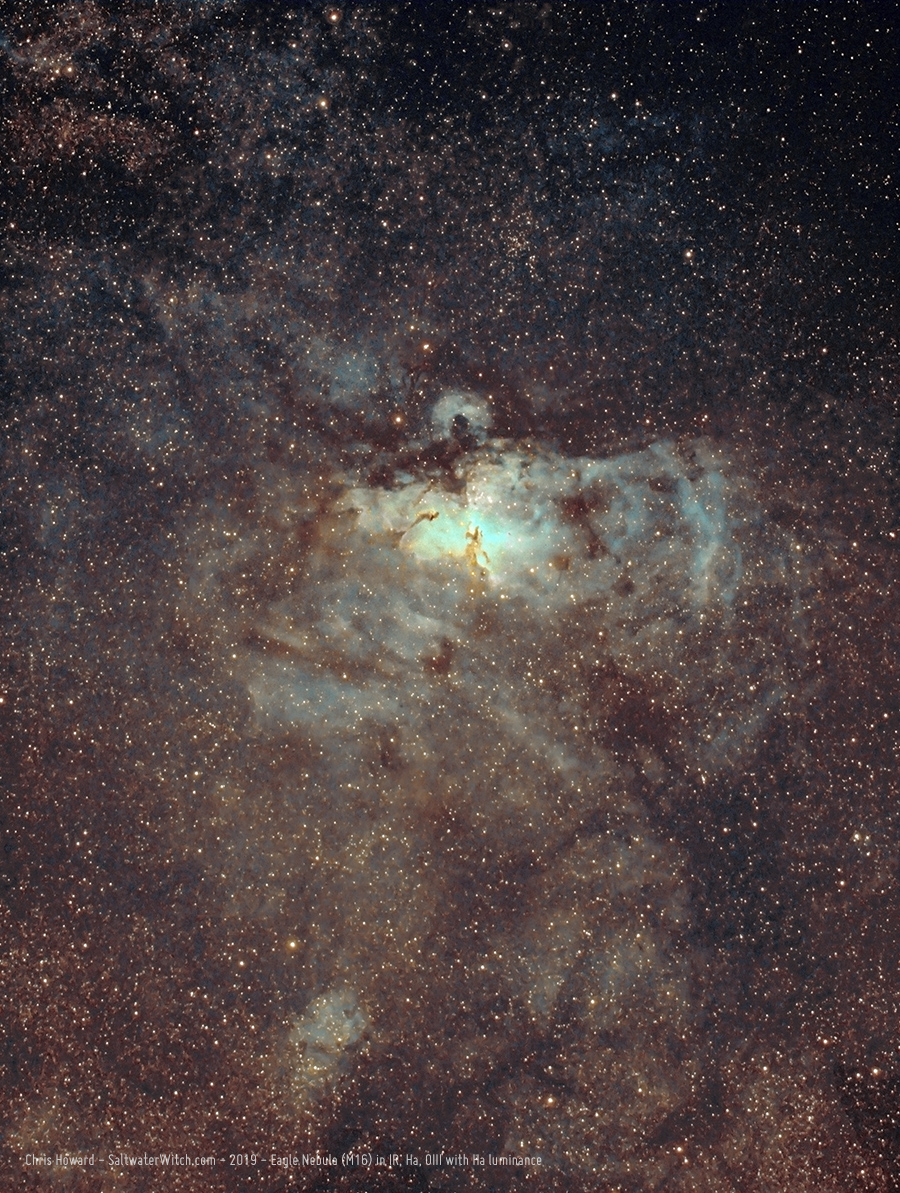
Here's the Ha stack:
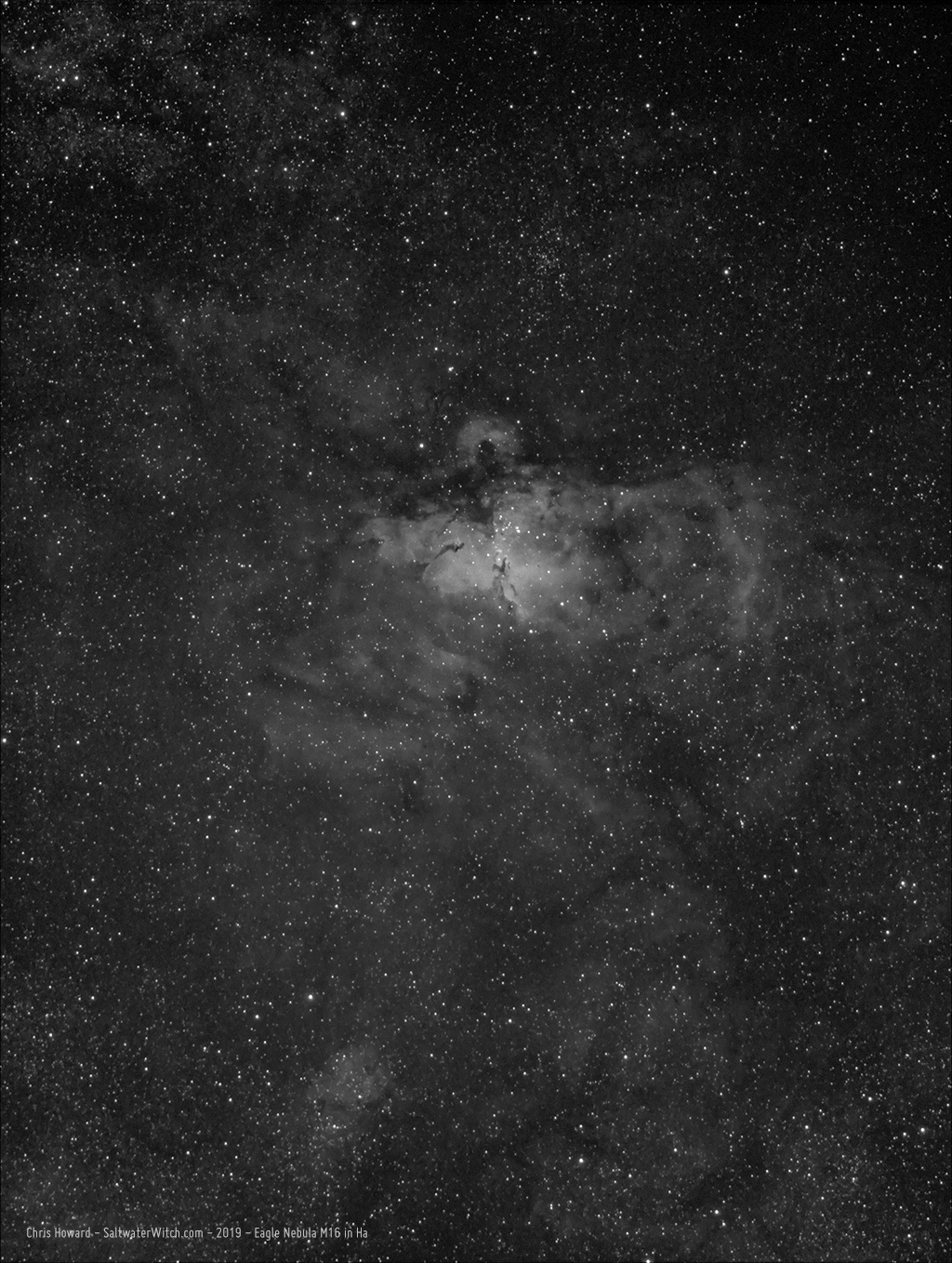
For comparison (with NGC 6611 above), here's the processed version of the Eagle Nebula (M16) I took last year with a slightly different setup--same William Optics scope + Atik414EX mono CCD camera. This is a bi-color hydrogen-alpha and oxygen3. With this one I think I had my OIII frames mapped to G and B channels, and Ha mapped to the Red channel.
